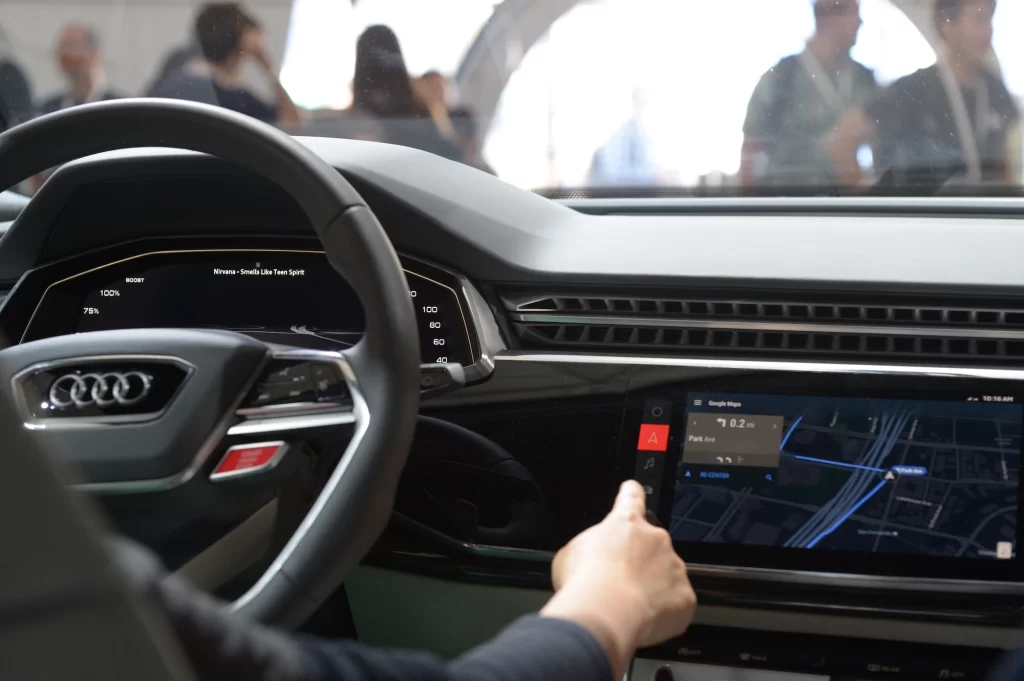Advanced Safety Features in Cars

There are many advanced safety features available in automobiles that you should know about. These include blind spot monitoring system, adaptive cruise control, and forward collision warning. If you are interested in purchasing a new car, you may be wondering what these features do and how they can help you avoid an accident.
Lane departure warning
Lane departure warning systems (LDW) are designed to help reduce the number of front-to-rear crashes. These systems utilize sensors to detect when the driver is about to drift out of their lane. They may also alert drivers with beeps or visual and tactile warnings.
Some lane departure systems combine LDW with blind spot monitoring. This technology uses cameras or ultrasonic sensors to alert the driver of vehicles that are entering their blind spots. In addition, some systems use the steering system to help steer the vehicle back into its lane.
Lane departure warning systems were originally designed for use on high-capacity roads with clear lane markings. However, they have now been incorporated on many newer models of cars.
Lane departure warnings use a camera on the front of the car to track the road and lane markings. The technology uses a Hough Transform and Canny Edge Detector to determine if the vehicle is on the correct lane.
Adaptive cruise control
Adaptive cruise control (ACC) is an advanced safety feature in cars that can help to prevent crashes and reduce your stress while cruising down a busy highway. ACC is also a good idea for drivers who drive in urban environments.
ACC is a system that automatically maintains a pre-set speed and follows a pre-defined distance ahead of the vehicle. Typical ACC systems incorporate a radar sensor that is mounted on the front of the car. These sensors use a combination of braking and transmission to slow the vehicle.
ACC has been in development for many years. The first ACC systems to hit the market were from Mercedes.
ACC works in tandem with other driver assistance technology. Adaptive cruise control is usually bundled with other driver-assistance technologies like forward collision warning and lane departure warning.
Rearview camera
Backover accidents are responsible for a lot of injuries and even deaths every year. But the good news is that more and more vehicles are coming equipped with backup cameras. This new safety feature is expected to save many lives.
Backup cameras aren’t replacing mirrors, but rather they provide a visible view of the area behind your car when you are reversing. They also provide rear cross traffic alerts to help drivers avoid collisions.
These systems can be especially beneficial for drivers of larger vehicles. However, their effects were not as clear cut as the studies might have suggested.
One study looked at the efficacy of both backup cameras and blind spot monitors. It found that rearview cameras significantly decreased the incidence of backing crashes. The magnitude of the differences was large for both types of technology.
Blind spot monitoring system
Blind spot monitoring systems help drivers avoid lane changes and collisions. They may also activate brakes when they sense a vehicle in their blind spot. The warnings may be audible, tactile, or visible.
A blind spot monitoring system is an advanced safety feature that is installed on many vehicles. These systems use sensors to detect oncoming and rear vehicles. Once the vehicle is detected, the system alerts the driver with a warning light or beep. Some systems activate the steering control and apply the brakes, while others engage the brakes on one or more wheels.
Most cars with blind spot monitoring systems include a warning light in the exterior mirror. If a vehicle is detected in the blind spot, the warning light will flash.
Forward collision warning
Forward Collision Warning, also known as forward collision avoidance system or FCW, is an advanced automotive safety feature. It alerts you to a potential crash and allows you time to apply your brakes before a collision occurs.
The system uses radar or laser technology to monitor the distance between your vehicle and the one in front of you. If it detects a possible collision, it will send an audible and visual warning to you. Some systems even include a haptic alert.
While these technologies are great at preventing accidents, they are not perfect. For example, automatic brake systems tend to misread vehicles that are in the next lane. They may also not activate when you need them.
Another type of advanced automotive safety feature is Autonomous Emergency Braking, which applies the brakes automatically if the system detects that a collision is imminent. This technology is not always included in every vehicle, but it is becoming more widespread.




